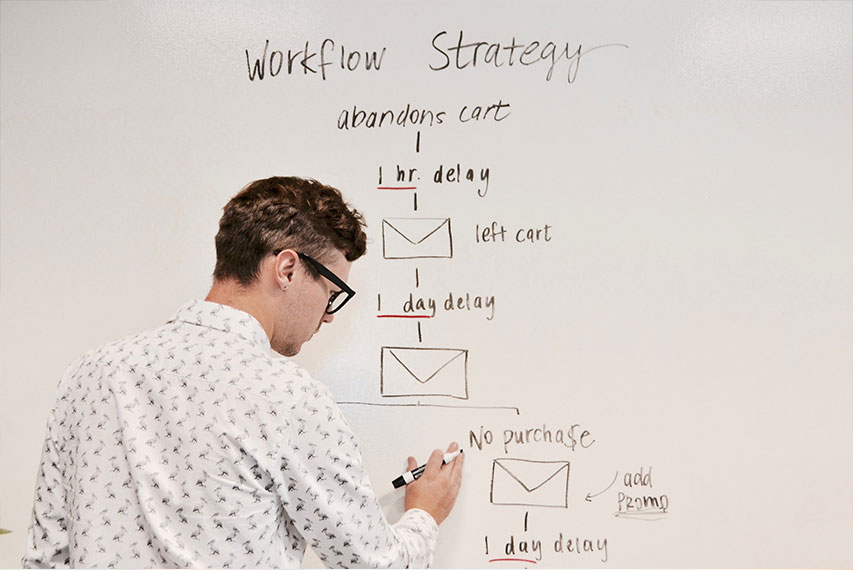[This article was originally published on Forbes.com]
A LinkedIn connection reached out to me while he was working on his thesis to ask a few questions about marketing automation and data protection. While these two topics may seem distant, my experiences handling large global databases within marketing automation platforms have kept the two topics very close, particularly during a time when General Data Protection Regulation (GDPR) compliance is still a fresh and ongoing topic. For marketing automation to perform at its best you need a great amount of data, and “with great data, comes great responsibility.”
I am sharing this response to not only give a clear explanation to the benefits of marketing automation but to also emphasize the technical, ethical and often legal understanding that is involved with modern marketing. Marketing is no longer just about trade show trinkets and emails. It’s more about process automation and data management. Here are his questions and my responses:
1. What is marketing automation?
Marketing automation can be defined in two paths:
Outbound: A company uses its intelligence regarding who is in their database to target communications based on known characteristics of the prospect. These characteristics can be based on a wide range of things — from demographics to product preferences to webpages the prospect has visited.
Automation can also be applied to create a series of communications based on timeframes or on how each individual responds to outbound communication. This automation is useful in that it can give the ability to design a customer journey that is uniquely based on customers’ responses or actions.
Inbound: After placing content in the path of business prospects, marketing automation can be used to monitor the digital activities and engagement of a prospect. Automation enables you to score or grade a prospect based on their engagement and present additional content to them at the appropriate point in their customer journey. The right content at the right time. Personalized and timely.
2. What are the obstacles and benefits that a company could face while using marketing automation?
One of the main obstacles that companies experience is not having enough content to build customer journeys. Without this, a business is unable to respond with the correct message fitting to where the prospect is in their own buying cycle. Automation gets you past the one-size-fits-all marketing only if you have enough content to match all sizes.
This is the place where our team typically finds our business to business (B2B) clients. They have made the expenditure for the machine but don’t have the content to fuel it. The fastest way to get them off the ground is through a process that involves creating large pieces of pillar content that can then be repurposed and remixed into multiple pieces of content, targeted at various stages of the customer journey.
The benefits of marketing automation are many:
• The ability to automatically follow up with prospects, therefore reducing leaks in the marketing-to-sales funnel.
• It allows the funnel to become a cycle, whereas prospects that are not ready to buy can be returned to marketing for more nurturing.
• It enables personalization based on each customer’s persona, responsiveness and digital interactions.
• It allows marketers to help sales by demonstrating which prospects are the best bet to call on.
• And best of all, it allows for tracking and attribution of marketing efforts from the first digital engagement all the way to the closed opportunity. I call this “click-to-close,” also referred to as “lead to revenue attribution.”
3. What are the existing solutions that could be implemented to secure the client’s personal data?
Any company gathering and using a customer’s data should establish strong data usage policies based not only on the area that they are based in but, more importantly, based on the regions in which their customers live. I would suggest starting with GDPR standards and then adjusting up or down in strictness, depending on where you conduct business and the personal data that you handle.
We suggest to, at a minimum, make sure that any inbound lead generation form asks for the prospect’s explicit consent to send them marketing content. Some parts of the world (most of the United States included) still allow implicit consent based on the fact that the customer chose to complete the form. This is not future-proof however, so gather full consent that explicitly describes your marketing intentions when possible.
4. What could companies do in order to secure clients’ personal data while using marketing automation?
A company needs to keep very clean data of these four elements:
1. Country of the prospect
2. Full consent to communicate with the individual
3. What type of communication the prospect consented to (i.e., marketing, operational, transactional, etc.)
4. The date that consent was gathered
There may be times when inbound forms are not involved in the collection of data. In these cases (such as badge scans, business cards and meetings), be consistent with verbally communicating to each person that you intend to email them information and why. Quickly record this data along with the date that it was gathered. Then, promptly send communication to them so that they remember who you are and that they gave you their information.
With these elements, you are able to determine if you can communicate, how strict the data usage is for that individual, and how much consent you need to send them communication. Automation can help with segmentation, but it can also steer you toward massive blind communication to the wrong prospects. Have a clear understanding of your database and clear segmentation toward what groups you communicate with, how, and when.
Conclusion
Marketing automation is a huge asset to be leveraged by marketing organizations looking for efficiency and scale. With the power of marketing automation also comes the responsibility to handle data carefully, ethically and even legally. Marketing automation and data management are two operations that must work hand in hand.


